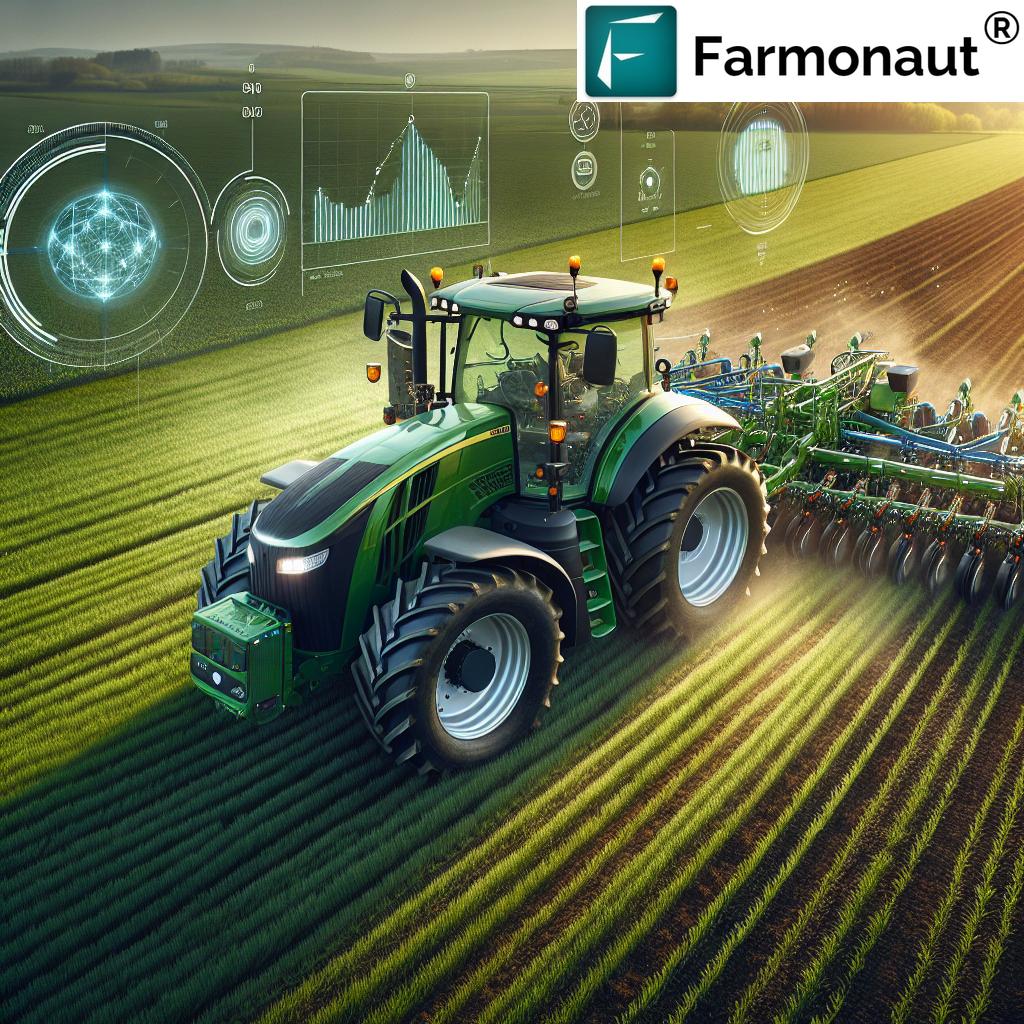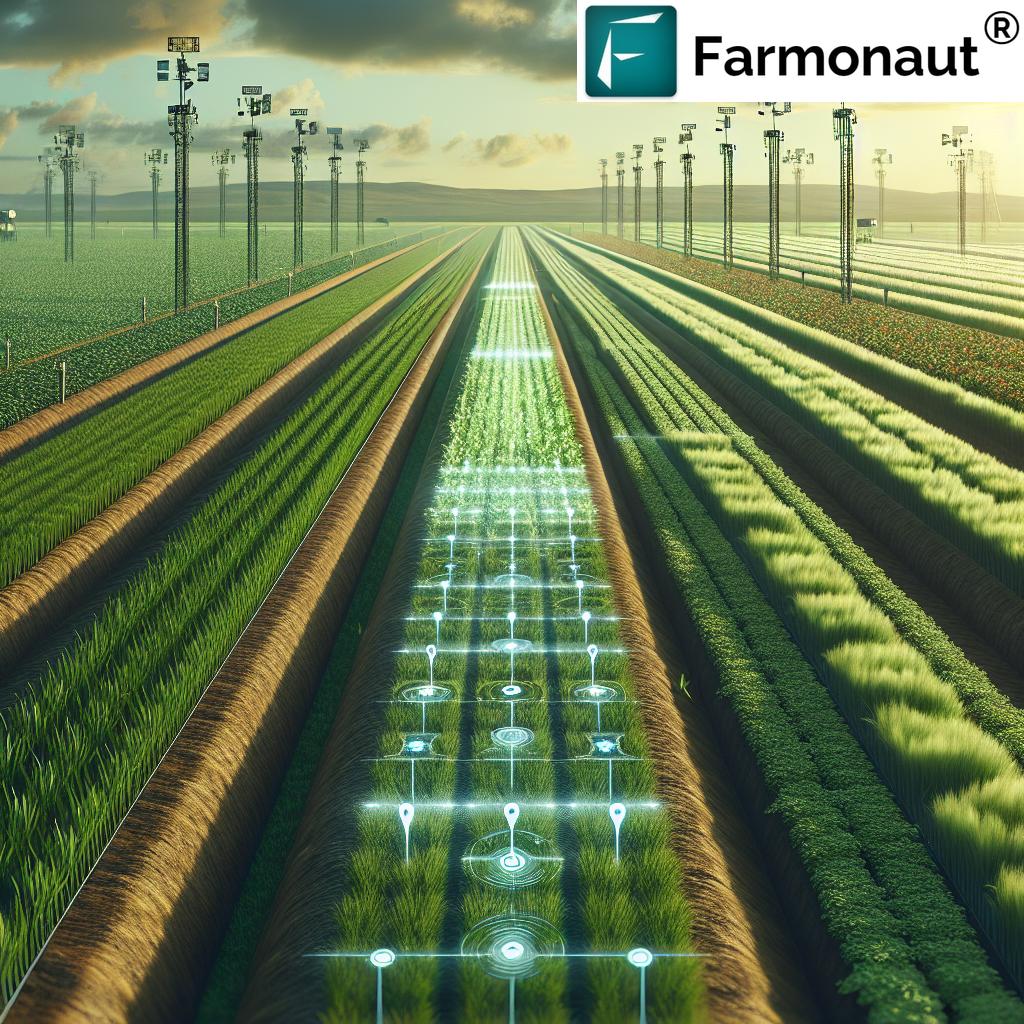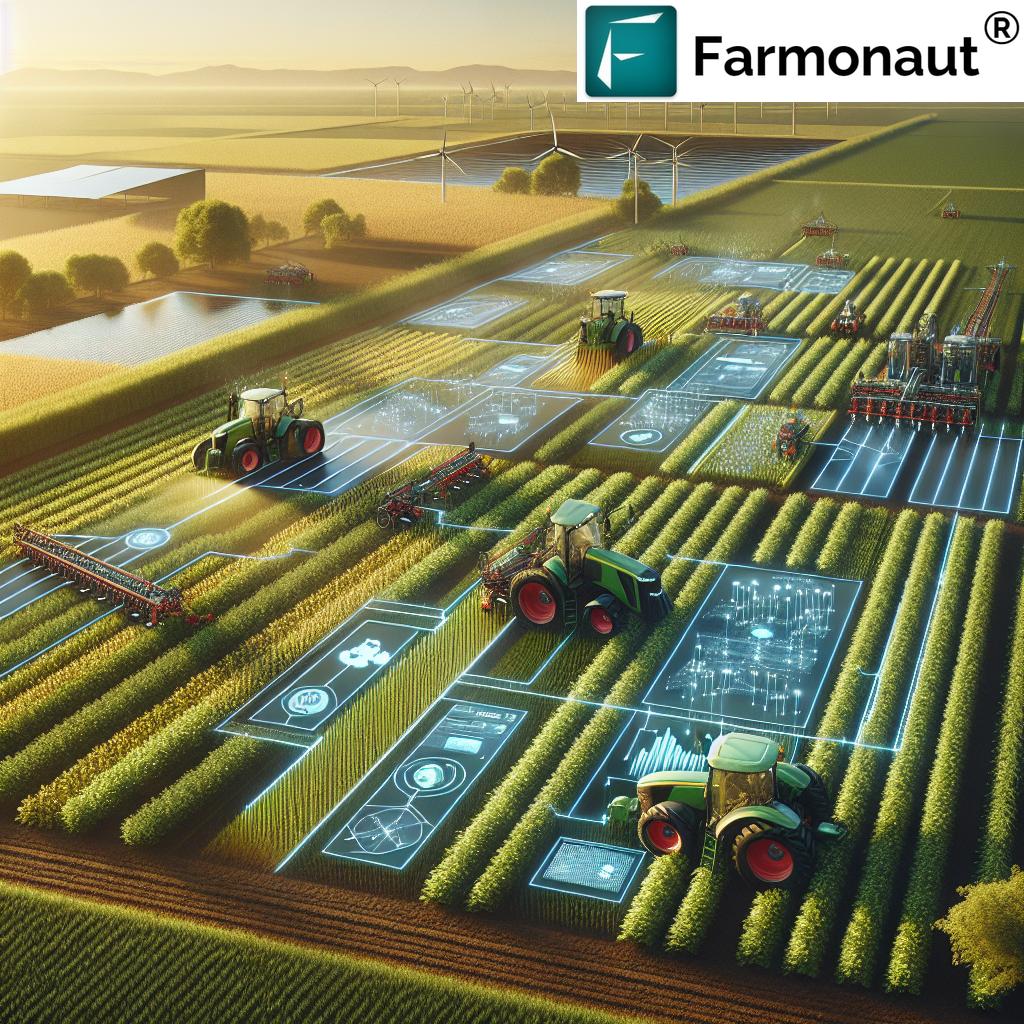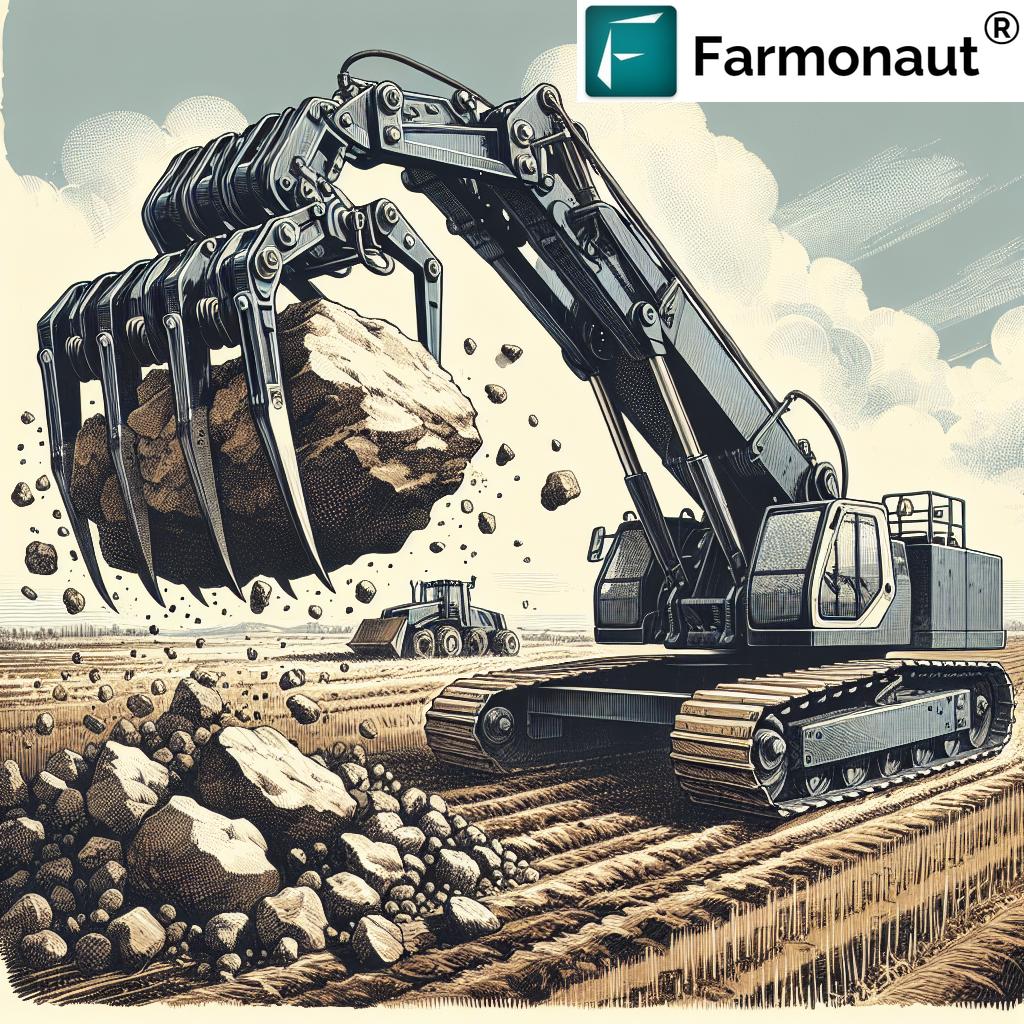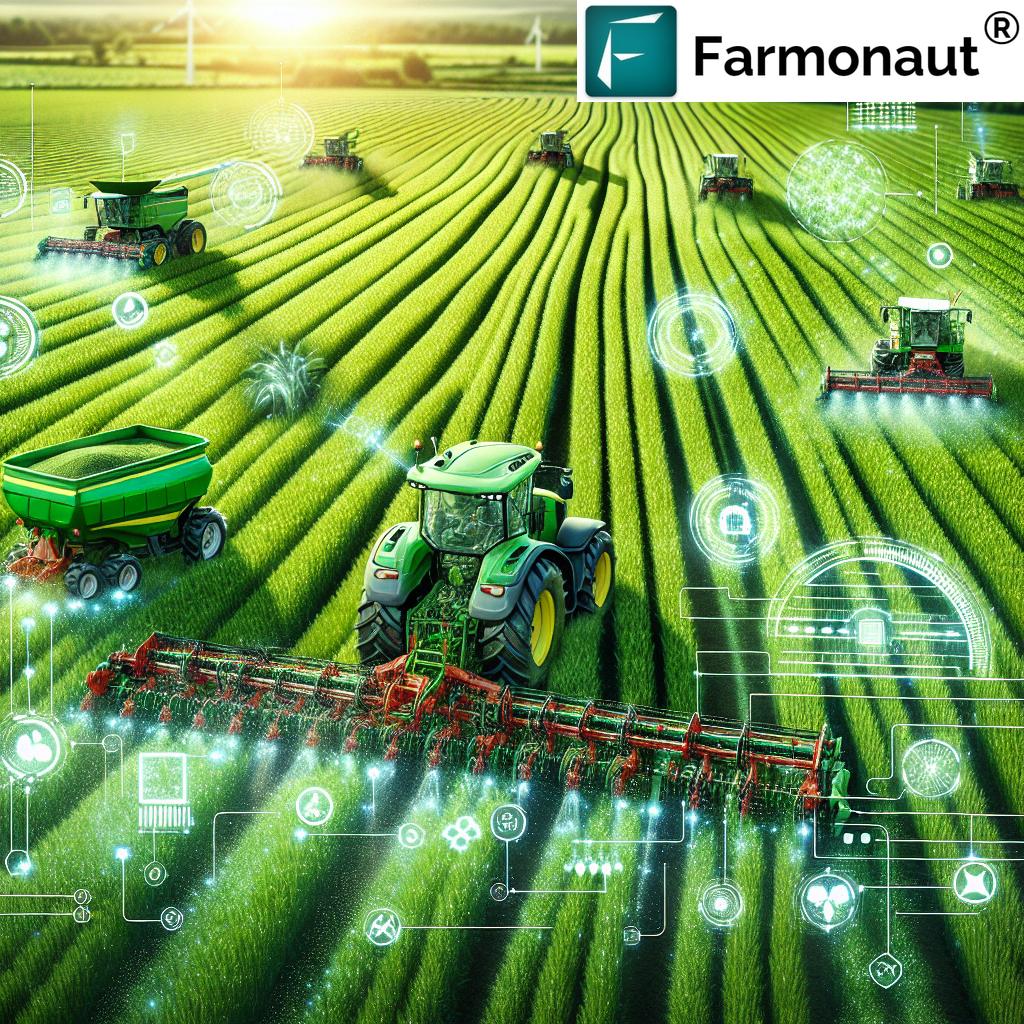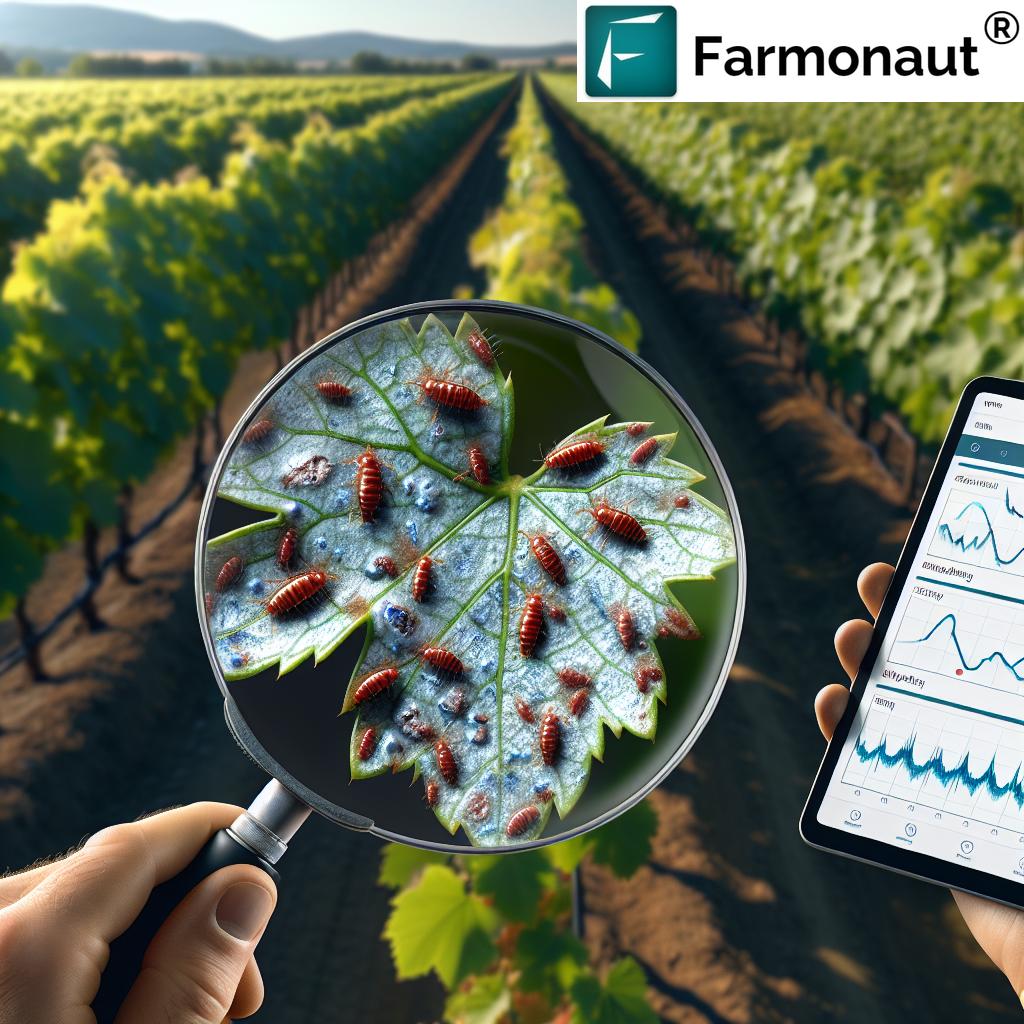Table of Contents
- AI Precision Agriculture: Precipitation Gauge Impact 2025 Overview
- The Core Role of Agriculture Precipitation Gauge
- How Does Precipitation Affect Agriculture in 2025?
- Agriculture de Précision: Transforming Farming with Data
- AI Precision Agriculture: Turning Rainfall Data into Smart Irrigation
- Impact Comparison: Traditional vs AI-Powered Precipitation Gauge
- Farmonaut Precision Platform: Enabling Modern Agriculture
- Integrating AI Precision Agriculture with Water Resource Management
- 2025 Trends, Challenges & the Future of Precision Precipitation Monitoring
- FAQ: Precision Precipitation Agriculture 2025
- Conclusion: AI Precision Agriculture & Precipitation Gauges in 2025
AI Precision Agriculture: Precipitation Gauge Impact 2025
Discover how the evolution from traditional agriculture precipitation gauges to AI-driven monitoring systems is revolutionizing agriculture, enabling smarter irrigation, conserving water resources, and maximizing crop yields in 2025 and beyond.
In the rapidly evolving landscape of agricultural technology, the integration of advanced agriculture precipitation gauge, AI precision agriculture, and precision data analytics is at the heart of modern farming breakthroughs. In this comprehensive post, we explore how accurate precipitation measurement and artificial intelligence are transforming how farmers, agribusinesses, and stakeholders monitor, analyze, and utilize rainfall data for irrigation management and sustainable crop production. By 2025, these innovations are not just technological upgrades—they are fundamental shifts powering food security, resource conservation, and environmental stewardship globally.
Focus Keywords: agriculture precipitation gauge, agriculture rain gauge, how does precipitation affect agriculture, agriculture de precision, ai precision agriculture, crop yields, irrigation, water conservation, sustainable farming practices, 2025.
The Core Role of Agriculture Precipitation Gauge
At the foundation of effective precipitation monitoring in farming lies the agriculture precipitation gauge—commonly referred to as an agriculture rain gauge. As a vital instrument, its primary function is to measure the amount of rainfall accumulated over a specific period, providing farmers with essential data about water availability within their fields.
Understanding Traditional Rain Gauge Technology
Traditional rain gauges are elegant in their simplicity. Usually, they consist of:
- A funnel that collects rain.
- A leading tube or channel.
- A calibrated container where the rainwater accumulates. This container is often marked with measurement lines for easy reading.
While these methods are simple and yet effective, the demands of modern agriculture have prompted the evolution of these devices toward advanced, smart, digital, and wireless gauges.
Evolution of Precipitation Gauges: Smart, Digital, and Connected
With the advance of technology in 2025, agriculture precipitation gauges have evolved dramatically:
- Digital wireless gauges: Equipped with sensors, IoT connectivity, and cloud integration for instant data upload and analytics.
- Real-time transmission: Data is transmitted to centralized farm management systems for on-the-go monitoring.
- Integration with precision agriculture: These gauges now feed information directly into AI-powered models, enabling smarter irrigation and resource allocation at the level of individual plots or even microclimates within large fields.
All these advances make monitoring precipitation not only more accurate, but also more actionable for optimizing irrigation and ultimately supporting higher yields.
Why Accurate Rainfall Measurement is Crucial
- Optimizes irrigation scheduling: Avoids both overwatering and drought stress.
- Supports soil moisture management for different crops and fields.
- Helps in identifying microclimatic variations—especially important for large farms, forestry operations, and heterogeneous landscapes.
- Feeds into climate-smart farming strategies by establishing clear historical records of rain events.
Simply put, the core of modern agriculture lies in the data that these gauges provide.
How Does Precipitation Affect Agriculture in 2025?
How does precipitation affect agriculture? The answer is multifaceted—and more critical than ever as we face climate change and the need for precision management in 2025:
Direct Influences of Precipitation in Modern Farms
- Soil Moisture Levels: Adequate rainfall supports seed germination, nutrient uptake, and robust photosynthesis, creating favorable conditions for high crop yields.
- Water Availability: Rain is often the dominant source of water in agriculture, influencing irrigation needs and reducing reliance on groundwater or surface waters.
- Field Productivity: Precipitation patterns guide planting and harvesting schedules—too little or too much at the wrong time can derail entire seasons.
- Microclimatic Variations: Rainfall is often unevenly distributed within fields, impacting crop performance and resource allocation.
Risks of Inaccurate or Mismanaged Rainfall Data
- Underestimating Rainfall: May lead to over-irrigation, strain on water resources, and increased input costs.
- Overestimating Rainfall: Insufficient irrigation can lead to plant stress, lower vigor, and reduced yields.
- Excessive Rain: May cause waterlogging, root diseases, and nutrient leaching.
Overall, understanding and accurately measuring precipitation is absolutely vital for scheduling irrigation, conserving resources, and optimizing productivity.
Precipitation and Forestry – The Overlooked Link
- Rainfall patterns determine tree species viability, growth rates, and forest health.
- Helps identify susceptibility to pests, fire risks, and guides long-term management strategies.
Climate Variability Makes Precise Measurement Urgent
New climate variability patterns are emerging worldwide in 2025—more droughts and intense rain events. The only safeguard: robust, technology-driven measurement and adaptive management strategies based on actionable data.
Agriculture de Précision: Transforming Farming with Data
In the era of agriculture de précision (precision agriculture), advanced technology is used to optimize field-level management based on highly detailed, site-specific information. Modern precision agriculture integrates precipitation data with other powerful datasets (soil moisture, temperature, humidity, and satellite imagery) to deliver smart, actionable recommendations.
Precision Agriculture: Components and Advantages
- Soil Moisture Sensing: Combined with rainfall data, it ensures irrigation is scheduled only when and where it is needed—maximizing resource efficiency.
- Variable Rate Technology: Applies water, fertilizer, and pesticides in a precisely targeted fashion—reducing inputs and environmental impact.
- Remote Sensing: Satellites and drones collect real-time environmental data, quickly identifying variations within fields.
- Centralized Management Systems: Pull diverse data streams together—enabling decision-makers to view their entire farm ecosystem in real time.
Benefits of Agriculture de Précision
- Resource Conservation: Save water, energy, and input costs.
- Reduced Environmental Footprint: Lower run-off, less pollution, and better soil health.
- Risk Reduction: Respond to weather changes and climate variability with speed and accuracy.
- Yield Optimization: Targeted applications help crops thrive, maximizing output across entire fields.
The integration of precipitation monitoring with agriculture de précision is a game-changer for agricultural productivity and sustainability into 2025 and beyond.
AI Precision Agriculture: Turning Rainfall Data into Smart Irrigation
AI precision agriculture is the ultimate leap forward, introducing artificial intelligence and machine learning to unlock the full potential of rainfall data and environmental monitoring. AI doesn’t just record past rain—it predicts future patterns, analyzes microclimatic shifts, and suggests actionable interventions.
AI-Powered Data Analytics: How It Works
- The AI engine processes inputs from rain gauges, satellites, IoT sensors, and weather forecasts.
- Machine learning models detect subtle trends, micro-patterns, and anomalies invisible to manual methods.
- Decision support systems advise on optimal irrigation timing—preventing water waste and crop stress.
- Real-time alerts can be generated for overwatering, drought risk, or changing rainfall conditions across specific plots or tree lines (especially valuable in forestry).
AI precision agriculture is about more than prediction—it delivers prescription for smarter, data-driven management.
Benefits in 2025: From Efficiency to Resilience
- Up to 30% water savings via precision irrigation and actual in-field measurements as reported in recent studies.
- Farm yields can jump by 10-20% where AI-driven precipitation analytics guide irrigation and resource timing.
- Reduces drought and disease stress by flagging unusual rainfall gaps or excess (mitigating crop loss before it happens).
AI enables farmers to be proactive—not just reactive—helping ensure sustainable farming even in the face of unpredictable climate conditions.
Want to integrate AI-driven environmental and rainfall data directly with your monitoring system or precision tools? Explore our Farmonaut Weather and Satellite Data API or get started with developer documentation at Farmonaut API Developer Docs.
Enabling Smart Decisions: Crop Health, Resource Management & Beyond
- Satellite crop health monitoring offers real-time NDVI, soil moisture, and environmental data.
- Jeevn AI advisory systems give tailored, localized recommendations based on field status, rain data, and forecasted needs.
- Blockchain-based traceability ensures full transparency of water and input management for food safety and brand trust.
Learn how traceability is transforming food & fiber supply chains on the Farmonaut Product Traceability page.
Farm management becomes both holistic and site-specific through AI-powered analytics, helping ensure sustainable yields in all environmental conditions.
Comparison Table: Traditional vs AI-Powered Precipitation Gauge Impact
| Precipitation Measurement Method | Estimated Irrigation Water Savings (%) | Estimated Crop Yield Increase (%) | Data Resolution (per day/per hour) |
Year of Implementation (Estimated) |
|---|---|---|---|---|
| Traditional Gauge (Manual or Basic Digital) |
5–10% | 2–5% | Daily | Before 2020 |
| AI-Powered Gauge (Smart Digital, IoT, Satellite-integrated) |
25–30% | 10–20% | Hourly (or near real-time) | 2022 & Beyond |
This table highlights the measurable benefits of moving to AI-driven, high-resolution precipitation monitoring in precision agriculture: increased water efficiency, significant yield gains, and enhanced data for smarter decisions in modern agriculture.
Farmonaut Precision Platform: Enabling Modern Agriculture
We at Farmonaut empower farmers and agribusinesses globally through advanced, affordable precision agriculture solutions. Our cloud-based and app-based platform leverages a unique mix of satellite imagery, artificial intelligence, and blockchain to help users:
- Monitor real-time crop health and soil moisture at the field and sub-field level
- Analyze rainfall data to prevent drought stress and overwatering, optimizing irrigation and yields
- Receive AI-powered decision support for inputs, scheduling, and resource management
- Ensure sustainable and compliant operations through Farmonaut Carbon Footprinting solutions (ideal for those seeking to monitor and reduce agricultural emissions in line with 2025 environmental standards)
- Implement blockchain-based traceability for food and fiber brands here
- Access via easy-to-use Android, iOS, web apps, or API—perfect for smallholders, cooperatives, agribusinesses, governments, and researchers alike
Key Features of Farmonaut’s AI-Driven Solutions for Modern Agriculture
- Affordable, scalable tech—no expensive hardware required: gain high-resolution data from satellites for any farm size
- Carbon footprinting: Actionable insights into reducing environmental impact. More on our carbon monitoring tools
- Flexible management: From plot-level to large-scale farm management and administration, combine smart data with centralized tracking
- Resource allocation: Optimize fleet and logistics with Farmonaut’s fleet management solution
- Insurance and credit access: Streamline loan approvals and insurance with satellite-based verification
Universal Accessibility
Our mission is to make precision agriculture affordable and accessible across the globe—democratizing access to advanced data and analytics for all, regardless of operation size or region.
Get started with the Farmonaut App:
Learn more about how to streamline resource management and sustainable farm operations with our feature-rich solutions for crop, fleet, and plantation advisory at Farmonaut Crop Plantation & Forest Advisory.
Integrating AI Precision Agriculture with Water Resource Management
Across 2025 and beyond, integrating AI and precision agriculture with advanced precipitation gauges is revolutionizing water resource management in farming:
- AI models synthesize rainfall, evapotranspiration, and soil moisture data—delivering hyper-local, day-by-day water management plans.
- Drones and IoT-enabled rain gauges deliver high density, real-time cloud data from all corners of the farm, feeding it into analytics dashboards.
- Automated irrigation systems adjust watering schedules in real time based on rainfall observed and predicted, preventing both overwatering and drought.
This integrated approach is not only efficient—it is essential for conserving water resources, ensuring crop health, and strengthening food resilience in the face of increasingly variable weather patterns.
Blockchain and Water Management Traceability
Farmonomics extend beyond the field. Blockchain traceability supports full transparency in resource management for quality assurance, sustainability claims, and regulatory compliance. See how traceability works for the entire agri supply chain here.
Farmers, brands, and governments can track every stage: from rainfall received to irrigation applied, documenting actual resource use and supporting consumer and regulatory trust.
Scaling Across All Farm Types and Sizes
From individual plots to entire plantation zones and forestry blocks, these advances—enabled by companies like Farmonaut—make precision agriculture and weather analytics scalable and cost-effective for all farm sizes, demographics, and regions.
2025 Trends, Challenges & the Future of Precision Precipitation Monitoring
Key Technology Trends
- Increased IoT Connectivity—Every field can have multiple connected rain gauges with live feeds.
- Next-Generation Sensors—Higher accuracy, better durability, and self-calibration features.
- AI Model Customization—Localizes recommendations for every field, every crop, every season, adapting to ongoing climate variability.
- Integration of Satellite, Drone & In-field Data—Combining multiple data sources for a 360-degree view of farm and forestry operations.
Persistent Challenges
- Data Integration Complexity: Combining multiple sensors, satellite feeds, and legacy systems
- Access & Cost: Ensuring smallholders and low-resource regions benefit from these advances
- Adaptation to Climate Extremes: Handling weather events beyond historical norms—droughts, floods, unseasonal rains
At Farmonaut, we are constantly innovating to address these challenges, making advanced precision agriculture accessible for everyone—from the smallest farm to the largest agri-business.
FAQ: Precision Precipitation Agriculture 2025
What is an agriculture precipitation gauge, and how does it work?
An agriculture precipitation gauge—also known as an agriculture rain gauge—is an instrument that measures how much rain falls over a certain period in a particular field. Traditionally, it consists of a funnel leading rainwater into a calibrated container. Modern versions are digital and wireless, transmitting data in real time for better monitoring and management.
How does precipitation affect agriculture in 2025?
Precipitation directly determines soil moisture, which in turn affects crop health, seed germination, nutrient uptake, growth, and yield. Too little rain can lead to drought and stress, while too much can cause waterlogging and disease. Accurate measurement and AI-powered analysis optimize irrigation and overall productivity.
What is agriculture de précision (precision agriculture)?
It’s a technology-driven approach to farming that uses detailed, site-specific environmental data (e.g., rainfall, soil moisture) to optimize resource use and crop management. This leads to higher yields, lower input costs, and sustainable practices.
How is AI changing rainfall data use in agriculture?
AI analyzes rainfall along with other field data, provides accurate irrigation recommendations, forecasts future rain events, detects microclimatic variations, and helps prevent drought stress and overwatering—an essential tool for maximizing yield and conserving water in a time of climate variability.
How can I get started with AI-powered precipitation analytics on my farm?
Farmonaut offers satellite-driven, AI-integrated crop and environmental monitoring via web and mobile apps, as well as API access for custom enterprise solutions. You can get started through the Farmonaut App or API (learn more).
Conclusion: AI Precision Agriculture & Precipitation Gauges in 2025
As we move firmly into 2025 and beyond, the intersection of AI precision agriculture, advanced precipitation gauge technology, and real-time data analytics is fundamentally transforming the face of modern agriculture. From the core utility of the agriculture precipitation gauge—now reimagined as a smart, digital, wireless device—to AI’s ability to synthesize, predict, and prescribe actions using this environmental data, the impact is clear:
- Increased water savings & yields through exact, data-fed irrigation scheduling.
- Minimized crop stress from drought or overwatering with actionable, real-time alerts and recommendations.
- Scalable, accessible technology for precision farming on any field—driven by platforms like Farmonaut.
- Integrated carbon tracking, traceability, and resource management tools to support sustainable and transparent operations.
The future is clear: Precision agriculture, powered by AI and intelligent precipitation measurement, is essential for feeding the world, conserving precious water, and ensuring environmental health in an era of climate variability.
Ready to revolutionize your farm’s yield and sustainability with AI + precision data?
Explore Farmonaut’s Precision Platform today.




